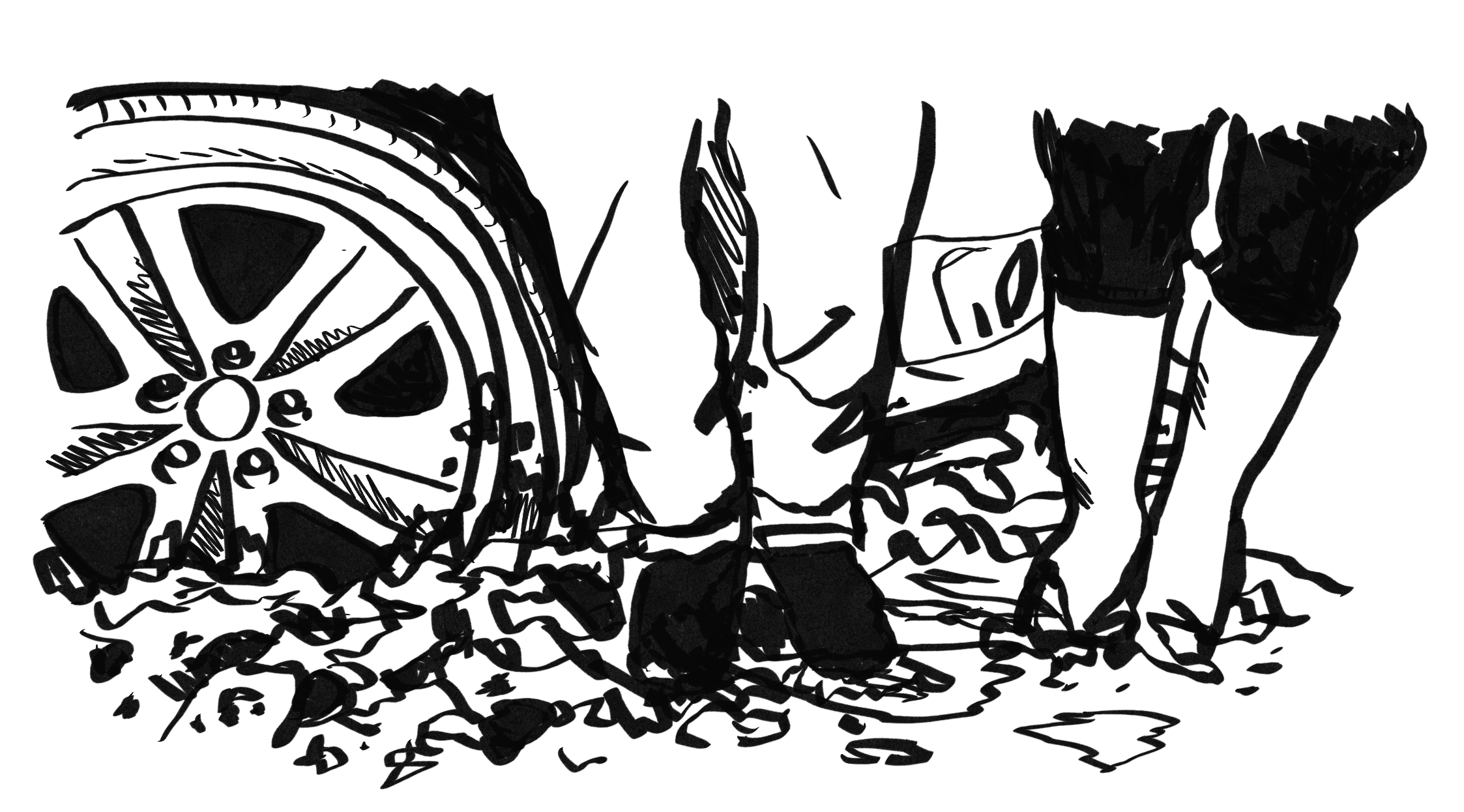Open Edges: What kind of times are these?
April 21, 2023
“I won’t tell you where the place is, the dark mesh of the woods
meeting the unmarked strip of light—
ghost-ridden crossroads, leafmold paradise:
I know already who wants to buy it, sell it, make it disappear.” – Adrienne Rich
We move through the darkness like fireflies, bobbing and swerving over the tire treads, like small trenches, dug into the logging road. Ross and I have been driving for just under six hours searching for Maine’s largest stand of old-growth.
A collection of skidders, feller bunchers and forwarders greet us as we drive farther into the woods. They look like discarded toys from afar, jumbled in the small driveway around the ranger’s station. It’s Saturday. They won’t be used until the work week resumes on Monday. Before we drive past, I look out my window, and for a split-second, I’m eye to eye with the wheel of the nearest harvester. Combined with the dirt crusted on the machine’s yellow body and caked in its tire treads, the mangled road that lies ahead tells a story of occupation, extraction and exploitation.
In the heart of the North Maine Woods, the old-growth forest area surrounds Big and Little Reed Ponds. No gates or fees bar visitors from the site, but it’s not easy to find. Signs, cell service and help are scarce, especially in the off-season. Ross is taking the final leg of the drive while I eat a turkey sandwich and daydream about the morning, when we’ll set off for the pond, take the canoe across, and traipse through the oldest unharvested swath of land on this side of the Mississippi. Once we get to the last access road, we’ll still have to set up camp for the night, but that doesn’t cross my mind. Undergrowth, thickets of moss, a tight-knit canopy—images of a place I’ve never been haunt me. I just want to get there already.
All I can think about is the forest, a biodiverse enclave, where tree trunks are free to grow as wide as they can, and nobody dares clear away the clutter from the floor. I’m about to take another bite of my sandwich when we hit a particularly bumpy stretch of road. The car lurches to the right, and, after a series of thuds and scraping sounds, settles into a divot shaped like the massive wheel of a log-hauling truck. Ross and I share a shaky laugh. The turbulent drive hasn’t broken our resolution.
“Alright, let’s get out of here,” I say after swiping a few errant breadcrumbs off my shirt.
“Alright, let’s get out of here,” he echoes.
He hits the gas. The car doesn’t budge.
As soon as we hop out of the car to inspect the wheels, our boots sink into cold sludge. It’s the tail-end of March: there is still snow on the ground, but the earth has begun to thaw. The temperature hovers just above freezing—warm by Maine’s standards. It’s mud season. Everybody knows that. In my frenzy to get to the woods, I didn’t think to check the road conditions. Twenty some miles from the sacred site, Ross and I are stuck in the mud.
We will spend the night in mud-soaked clothes but get a friendly tow the next morning. We will turn around, heading home indefinitely. Processions of skidders and feller bunchers and forwarders will make their way in and out of the North Maine Woods before we are able to return.


Comments
Before submitting a comment, please review our comment policy. Some key points from the policy: